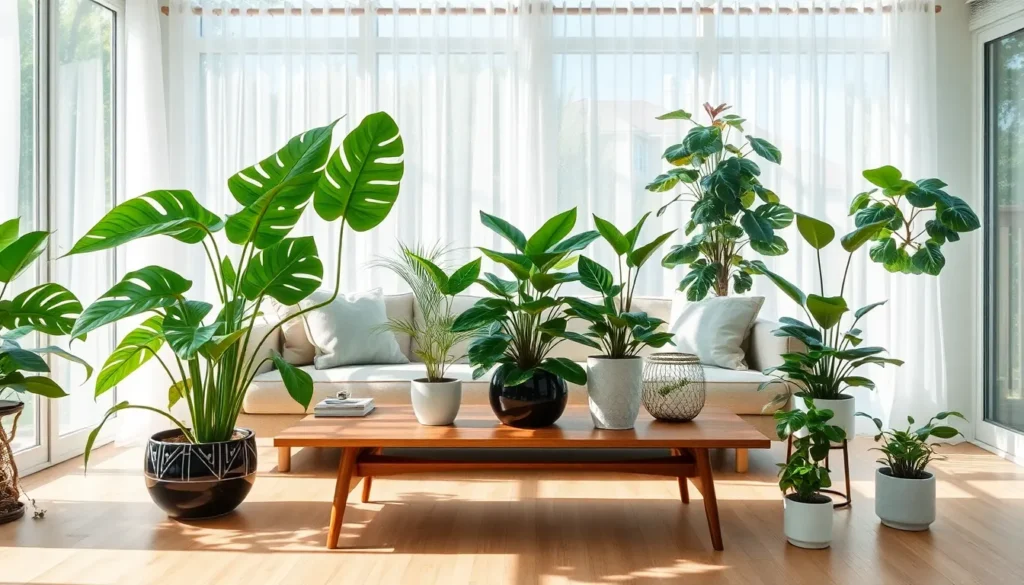Imagine transforming your living room into a vibrant oasis, where lush greenery not only complements your decor but also purifies the air and boosts your mood. Whether you’re new to the world of indoor gardening or have a seasoned green thumb, selecting the right plants can be the key to crafting a welcoming and lively atmosphere in your home. The beauty of indoor plants lies in their ability to bring nature inside, offering a sense of tranquility and a breath of fresh air, quite literally.
In this guide, we’ll explore eight must-have indoor plants that are perfect for any living room, regardless of your gardening expertise. From low-maintenance beauties to striking statement pieces, you’ll discover a variety of options that cater to different light conditions and care levels. You’ll learn about each plant’s unique features and how to nurture them so they thrive in your space. With the right guidance, incorporating these green companions into your living room will become an enjoyable and rewarding endeavor.
As we delve into this topic, you’ll find practical tips for selecting plants that suit your lifestyle and living environment. Our goal is to empower you with the knowledge to make informed choices, ensuring your indoor garden not only thrives but also enhances your well-being. Whether you’re looking to start small or expand your existing collection, this article will provide the insights necessary to cultivate a lively, inviting living room that feels like a personal retreat. Let’s embark on this green journey together, where every leaf has a story and every plant becomes a cherished part of your home.
Choosing the Perfect Fiddle Leaf
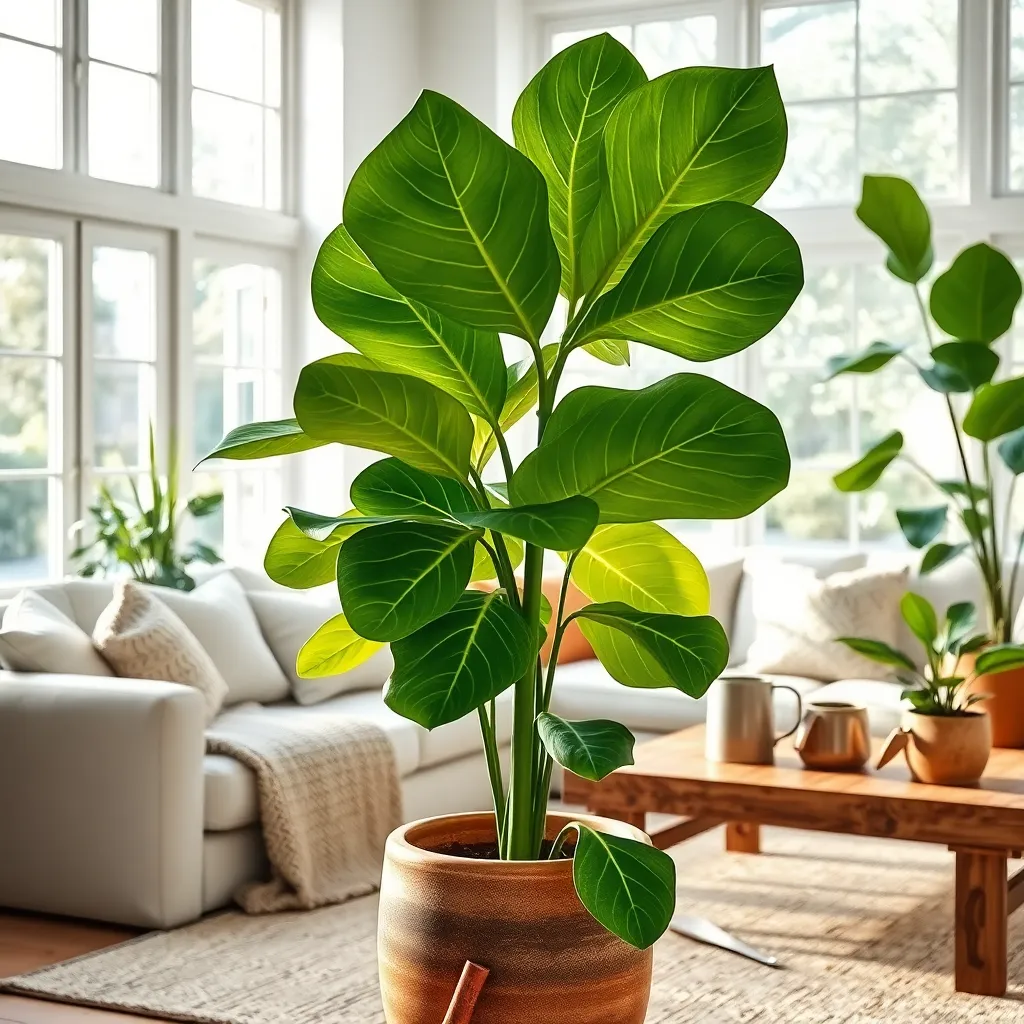
Selecting the perfect fiddle leaf fig (Ficus lyrata) can transform your living room into a lush, green haven. When choosing a fiddle leaf fig, look for plants with vibrant green leaves and a sturdy trunk to ensure it’s healthy and ready to thrive indoors.
It’s crucial to consider the size of the plant in relation to your space. Fiddle leaf figs can grow quite large, so ensure you have enough room for a plant that may reach six feet or more in height.
Optimal light conditions are essential for the health of your fiddle leaf fig. Place your plant near a window where it can receive bright, indirect sunlight, avoiding direct sun that can scorch the leaves.
For soil, use a well-draining potting mix that retains some moisture but doesn’t stay soggy. Consider a mix that includes peat, pine bark, and perlite to provide the perfect balance of drainage and moisture retention.
Watering is key to keeping your fiddle leaf fig healthy. Water when the top inch of soil feels dry, allowing excess water to drain away to prevent root rot.
For those looking to go a step further, consider rotating your plant every few weeks. This ensures even growth and prevents the plant from leaning towards the light.
Caring for Your Snake Plant
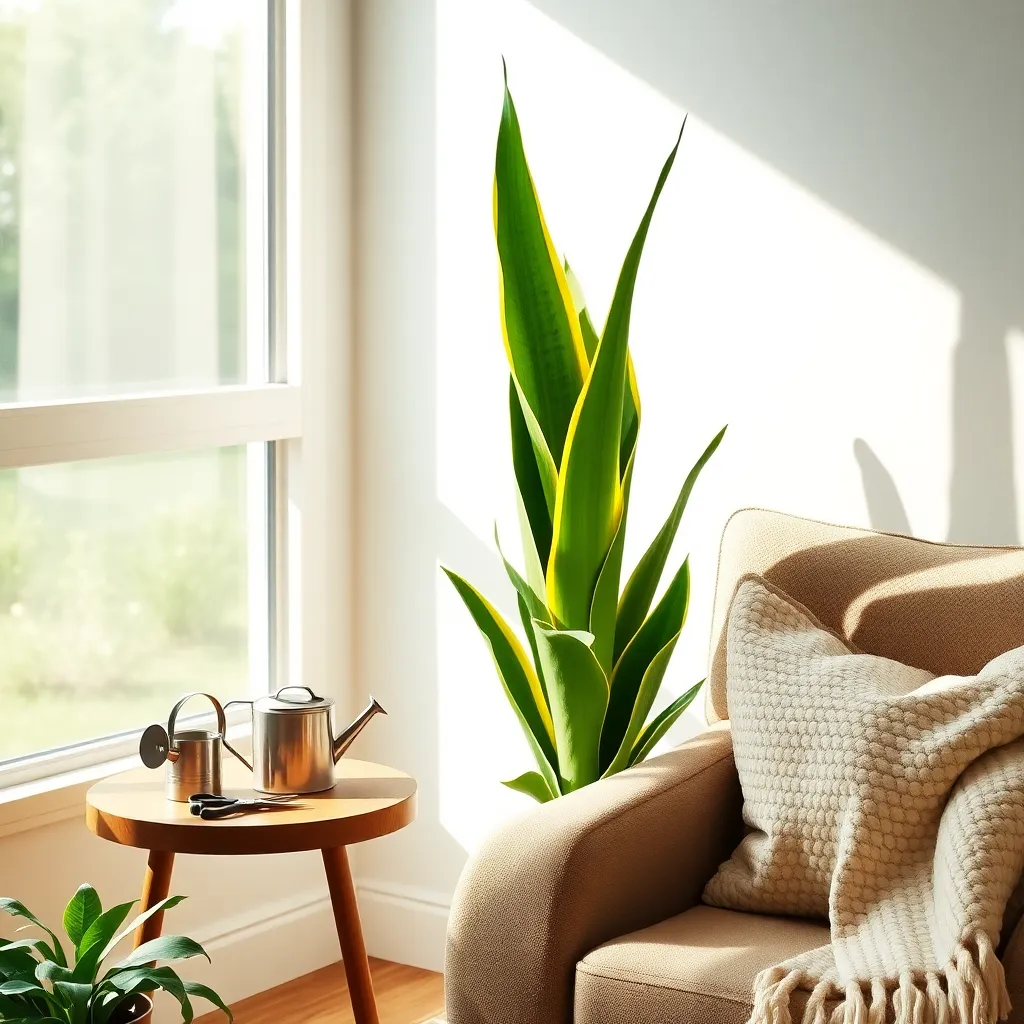
Snake plants, also known as Sansevieria, are favored for their robust nature and striking appearance. They thrive in a variety of lighting conditions, but for optimal growth, place them in bright, indirect light.
To keep your snake plant healthy, use a well-draining potting mix, such as a blend of cactus soil and perlite. This prevents root rot, which can occur if the plant sits in soggy soil.
Watering should be done sparingly, typically every 2-6 weeks, depending on the humidity and temperature of your home. It’s crucial to let the soil dry out completely between waterings to avoid overwatering, which is a common mistake.
During the growing season, you can boost growth by fertilizing with a balanced houseplant fertilizer every couple of months. More advanced gardeners may consider propagating their snake plant by dividing the rhizomes or leaf cuttings, a simple method to multiply your collection.
Enhancing Ambiance with Peace Lilies
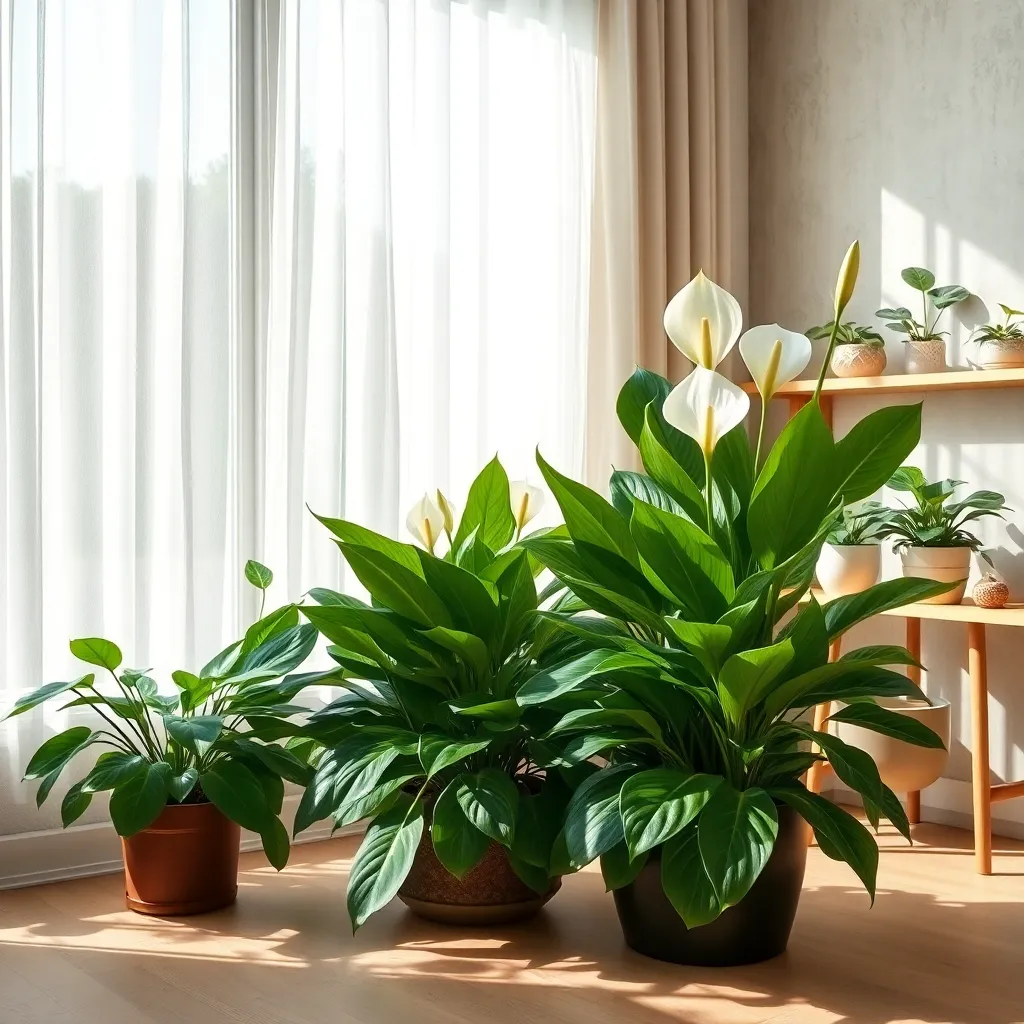
Peace lilies are a perfect choice for enhancing the ambiance of your living room with their lush, dark green leaves and elegant white blooms. They are known for their air-purifying qualities, making them not only beautiful but also beneficial for your indoor environment.
To keep a peace lily thriving, place it in a location with indirect light, as direct sunlight can scorch its leaves. If your living room has low light, don’t worry—peace lilies are quite adaptable and can tolerate lower light levels.
Water peace lilies when the top inch of soil feels dry to the touch, ensuring you don’t let them sit in standing water. Overwatering is a common mistake, so it’s better to slightly underwater than to overdo it.
For optimal growth, plant your peace lily in a well-draining potting mix that retains some moisture but allows excess water to escape. A mix containing peat moss and perlite works well, providing the right balance of moisture retention and drainage.
If you’re looking to give your peace lily a growth boost, consider fertilizing it every 6-8 weeks during the growing season with a balanced, water-soluble fertilizer. Be cautious not to over-fertilize, as this can lead to leaf burn and stunted growth.
Advanced gardeners can encourage more blooms by maintaining a consistent watering schedule and periodically wiping the leaves with a damp cloth to remove dust. This not only enhances the plant’s appearance but also improves its ability to photosynthesize effectively.
Low-Maintenance Pothos Varieties
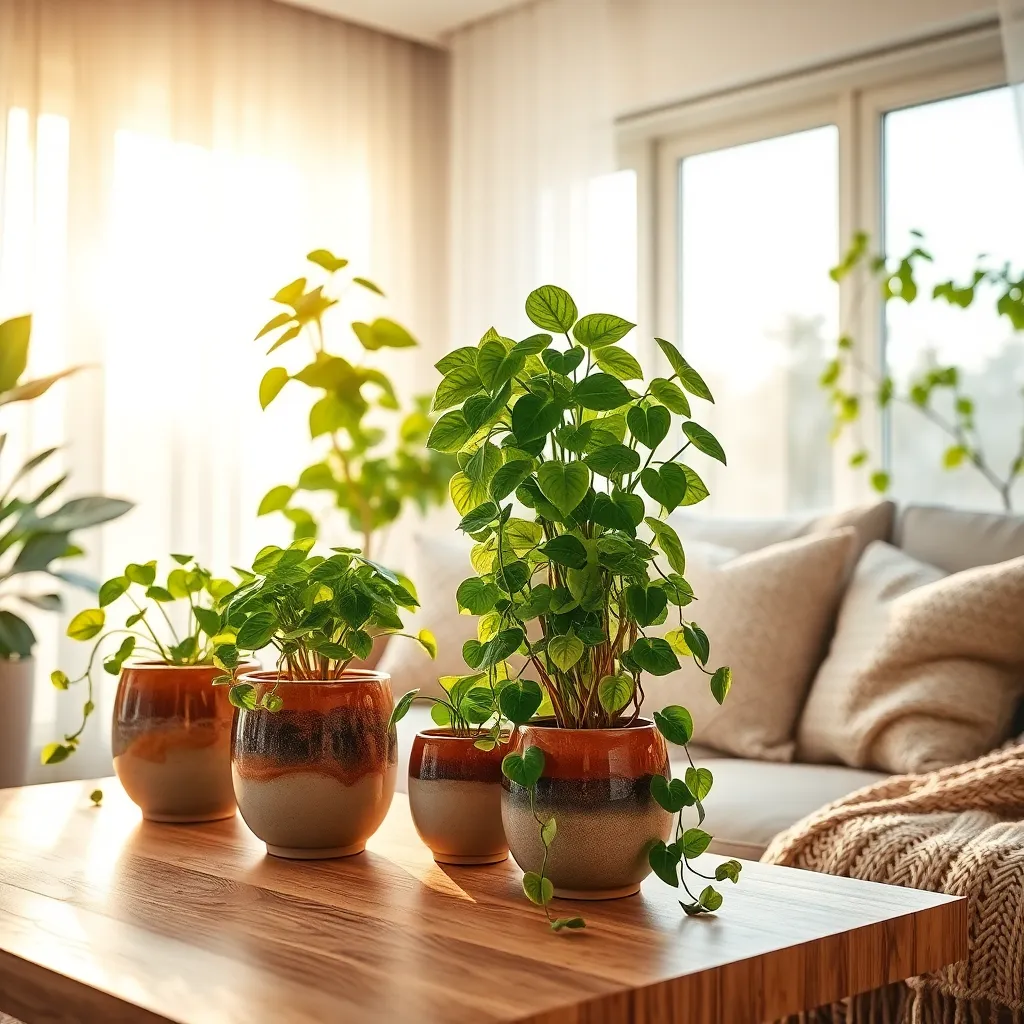
Pothos, known for their lush, trailing vines, are perfect for anyone seeking low-maintenance indoor greenery. These plants thrive in indirect sunlight but can also handle low-light conditions, making them versatile for various spots in your living room.
For optimal growth, use a well-draining potting mix, such as a blend of peat moss and perlite. This ensures the roots stay healthy by preventing waterlogging, which can cause root rot.
Water your pothos when the top inch of soil feels dry to the touch. Overwatering is a common mistake, so it’s crucial to let the soil dry out a bit between watering sessions.
Beginners will appreciate the pothos’ ability to forgive neglect, while more experienced gardeners can experiment with different varieties like the Golden Pothos or Marble Queen to add visual interest. For added humidity, which pothos enjoy, consider misting the leaves occasionally or placing the pot on a pebble tray.
Brightening Corners with ZZ Plants
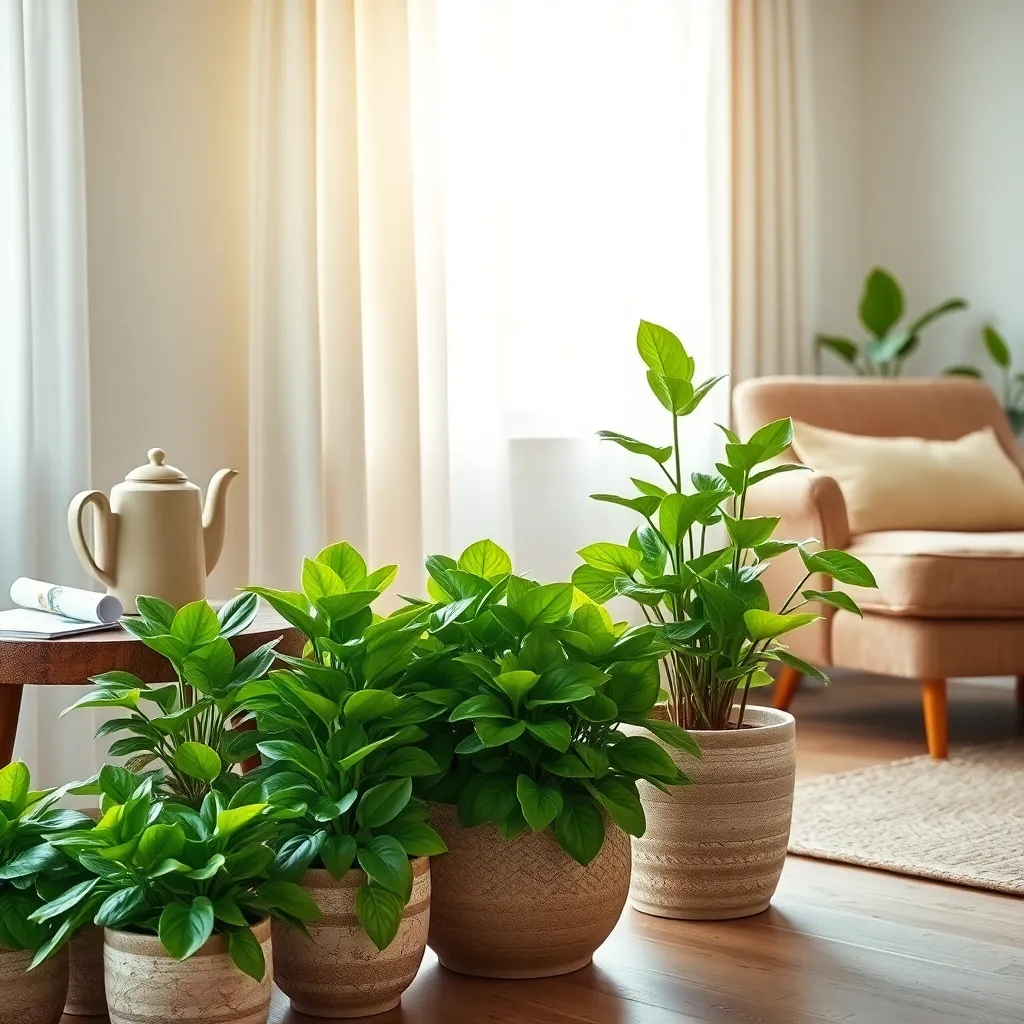
When looking to brighten corners in your living room, consider the resilient ZZ plant. Known for its glossy leaves and upright growth, the ZZ plant is perfect for adding a touch of green to low-light areas.
For beginners, the ZZ plant is an ideal choice due to its low maintenance needs. It thrives in indirect light and requires watering only when the soil is completely dry, making it a great option for those with busy schedules.
Advanced gardeners can experiment with different pot sizes to control the growth of their ZZ plants. Using a well-draining potting mix, such as a combination of cactus soil and perlite, can help prevent root rot.
To keep your ZZ plant healthy, ensure proper drainage by selecting pots with holes at the bottom. Fertilize every six months with a balanced liquid fertilizer to promote lush growth, especially during the growing season.
It’s important to wipe down the leaves occasionally to keep them dust-free and shiny. This not only improves photosynthesis but also enhances the plant’s aesthetic appeal in your living room.
Air-Purifying Benefits of Spider Plants
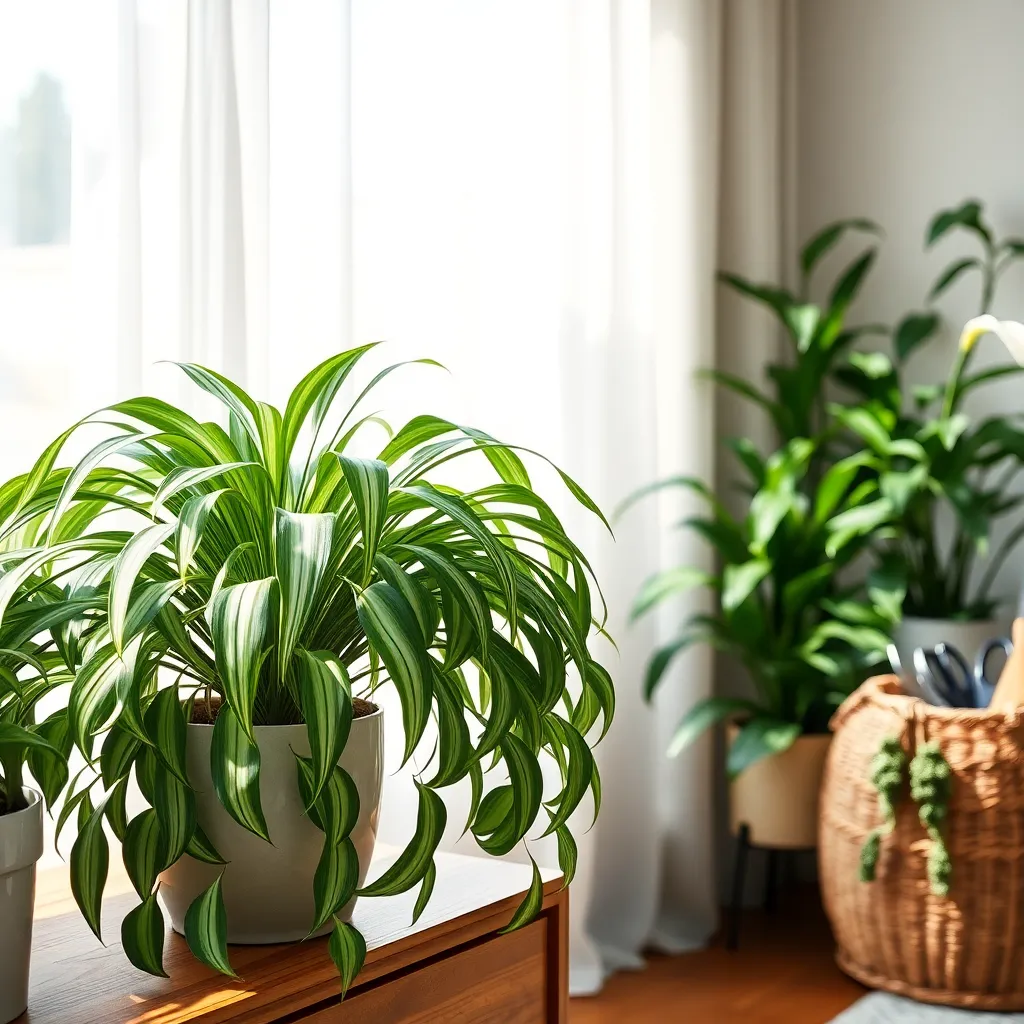
Spider plants are renowned for their remarkable air-purifying abilities, making them a must-have for any living room. They effectively remove pollutants like formaldehyde and xylene, which are common in household air.
Position your spider plant in a spot where it can receive indirect sunlight to thrive. Too much direct sunlight can scorch the leaves, while too little light will slow down its growth.
Watering spider plants requires a careful balance; they prefer to dry out slightly between waterings. A good rule of thumb is to water them once the top inch of soil feels dry to the touch.
For optimal growth, use a well-draining potting mix, such as one that combines peat moss, pine bark, and perlite. This will prevent root rot, a common issue when these plants are overwatered.
Advanced gardeners can propagate spider plants by removing their “pups” or offshoots and planting them in small pots. Ensure these new plants have developed roots before separating them from the mother plant for the best results.
Boosting Mood with Succulents
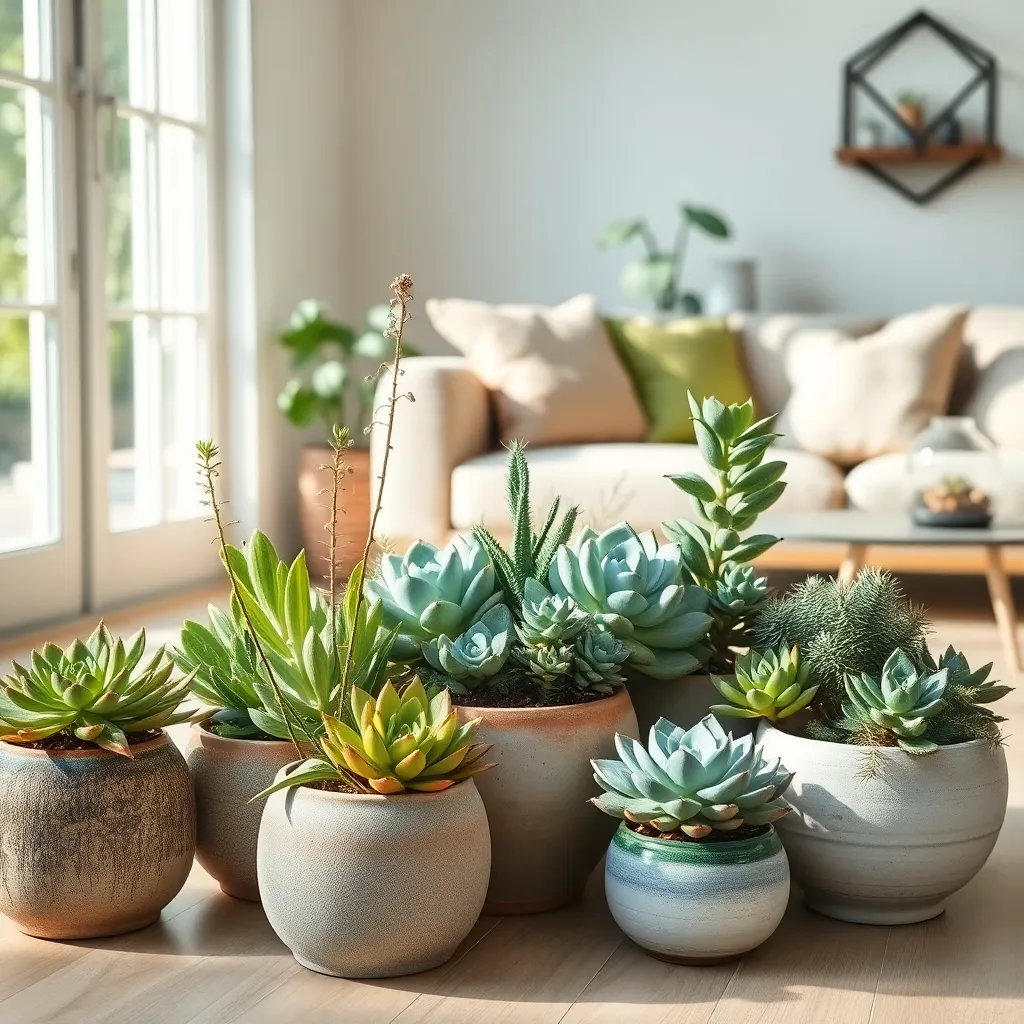
Succulents are a fantastic choice for boosting your mood, thanks to their vibrant colors and intriguing shapes. With their low-maintenance nature, they are perfect for busy individuals seeking a touch of greenery indoors.
These resilient plants thrive in bright, indirect light, making a sunny windowsill an ideal spot. To ensure their health, use a well-draining cactus mix and water only when the soil is completely dry, typically every two weeks.
For beginners, starting with varieties like Aloe Vera or Echeveria can be rewarding, as they are forgiving and easy to care for. More experienced gardeners might enjoy the challenge of growing Lithops, also known as living stones, which require precise watering techniques.
To maximize your succulents’ mood-boosting effects, consider creating a small indoor garden with a variety of shapes and colors. Group succulents with similar light and water needs to simplify care and create a harmonious display.
Arranging Indoor Plants Aesthetically
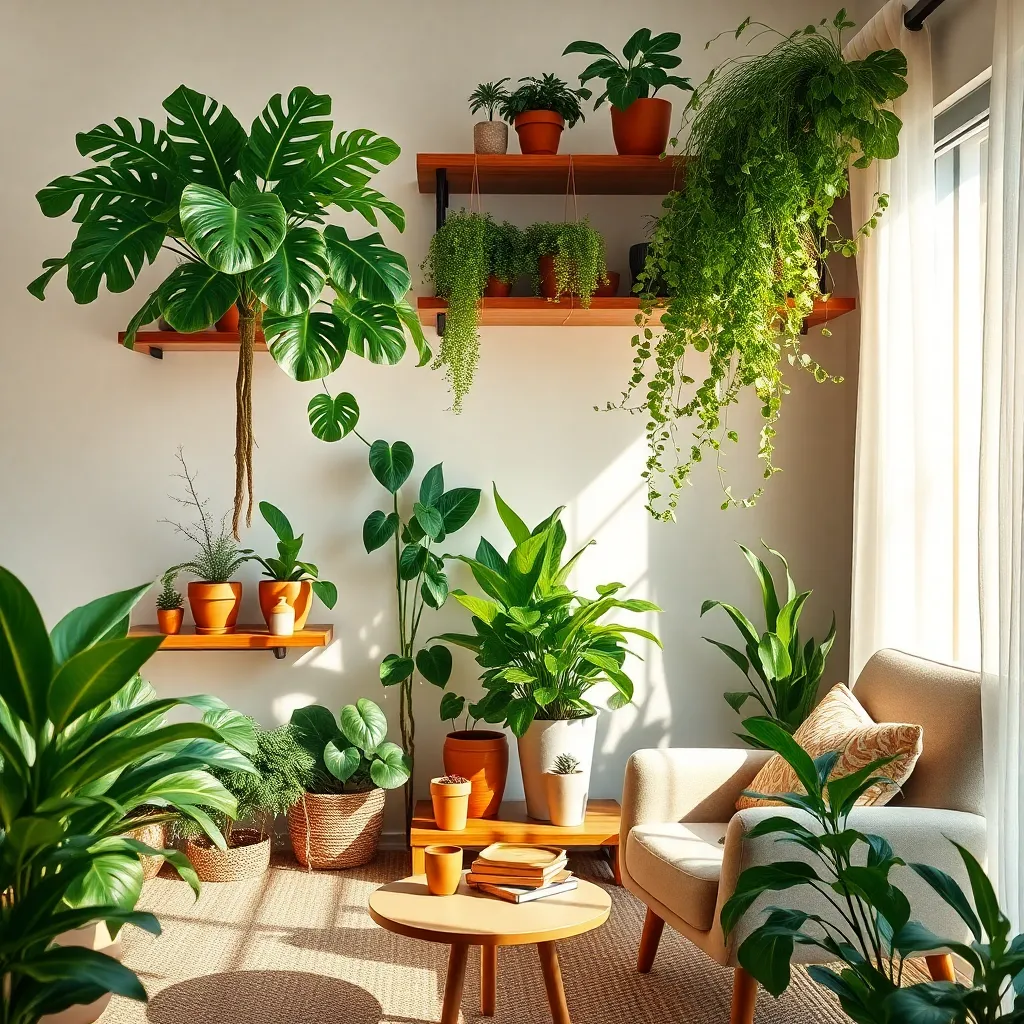
Creating a visually appealing arrangement of indoor plants can elevate the ambiance of your living room. Start by grouping plants with varying heights and textures to create an engaging display that draws the eye.
Consider using plants with bold foliage alongside those with delicate leaves to add contrast. For example, pair the large leaves of a Monstera with the fine fronds of a fern to achieve a balanced look.
Light conditions play a crucial role in plant placement, so be sure to assess the natural light in your room. Place sun-loving plants like succulents and cacti near windows with bright, direct light, while shade-loving varieties such as snake plants can thrive in lower light areas.
Watering needs should also be considered when arranging your plants. Group plants with similar moisture requirements together to simplify care routines and ensure each plant receives the right amount of water.
For a cohesive look, use decorative pots and planters that complement your living room’s decor. Consider using a color palette or materials like ceramics and woven baskets to create a unified style that ties your plant arrangement into the overall design of your space.
Conclusion: Growing Success with These Plants
As we explored the lush world of indoor foliage, we discovered eight must-have plants that not only enhance the aesthetics of your living space but also symbolize essential relationship concepts. The sturdy Snake Plant teaches resilience, while the adaptable Pothos embodies flexibility. With the Peace Lily, we find a reminder of tranquility, and the Fiddle Leaf Fig stands as a testament to growth. The enduring Jade Plant signifies good fortune, and the Spider Plant highlights the importance of nurturing. Through the Monstera, we appreciate the beauty of uniqueness, and the ZZ Plant champions simplicity and perseverance.
Now, take a moment to envision which of these plants resonates most with your current relationship journey. Head to your local nursery or favorite online shop, and introduce this green companion to your home as a tangible reminder of the qualities you wish to cultivate.
Bookmark this article to revisit these insights and ensure your relationships continue to thrive. By nurturing these green symbols of connection and commitment, you’re setting the stage for a flourishing future filled with love and understanding. Remember, small steps today can lead to flourishing relationships tomorrow.

